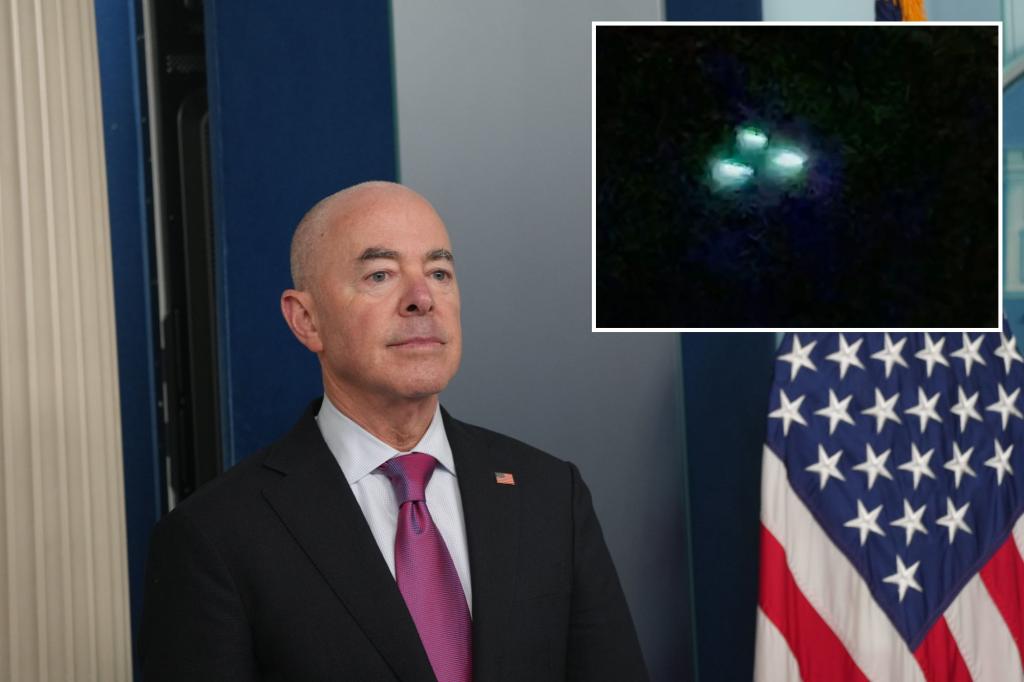The recent surge in reported drone sightings across the tri-state area has sparked considerable public concern and prompted calls for action from some lawmakers. However, Homeland Security Secretary Alejandro Mayorkas has downplayed the perceived threat, emphasizing that the vast majority of these sightings are likely misidentifications or involve commercially available drones posing no significant risk. He has firmly rejected suggestions to shoot down these unmanned aerial vehicles, citing legal limitations and the absence of any credible evidence of malicious intent.
Mayorkas’s assessment, delivered during a CNN interview, hinges on the distinction between the perceived threat and the actual reality. He attributes the heightened awareness of drones to their increasing accessibility and prevalence in everyday life. Many sightings, he contends, are likely instances of people mistaking small aircraft or other airborne objects for drones. Furthermore, even legitimate drone activity, he argues, does not automatically translate to a security threat. The availability of affordable drones at common retail outlets, including convenience stores, has normalized their presence, and most operations are likely recreational or commercial in nature.
This distinction between perceived and actual threat underscores the complexity of assessing and responding to potential drone-related incidents. While the public’s concern is understandable, especially in light of increased security awareness, Mayorkas maintains that there is no concrete evidence to support the notion of a widespread, organized, or malicious drone campaign targeting the tri-state area. He emphasizes that the Department of Homeland Security, along with other relevant agencies, is constantly monitoring the situation and remains vigilant against any potential threats. However, in the absence of concrete evidence indicating nefarious activity, he cautions against resorting to drastic measures, such as shooting down drones, which he deems both legally problematic and potentially counterproductive.
The legal framework governing the use of force against drones is complex and restricts the government’s ability to respond with lethal force. Mayorkas points out that the authority to interdict airborne objects rests with specific agencies, each with its own jurisdiction and limitations. The Coast Guard has authority in maritime environments, the Secret Service protects national leaders, and Customs and Border Protection operates along the border. These agencies are bound by strict protocols and regulations that dictate when and how they can engage with airborne objects. Shooting down a drone, even one suspected of violating airspace regulations, is not a simple or readily available option. Such action requires careful consideration of the legal implications, potential collateral damage, and the overall proportionality of the response.
Furthermore, Mayorkas implicitly cautions against overreacting to public anxieties. He suggests that a knee-jerk response, such as indiscriminately shooting down drones, could create more problems than it solves. It could lead to unintended consequences, such as endangering civilians, escalating tensions, and undermining public trust. The emphasis, he suggests, should be on gathering accurate information, assessing the situation objectively, and responding proportionately to any identified threats. This approach prioritizes careful investigation and evidence-based decision-making over hasty actions driven by public perception or political pressure.
In essence, Mayorkas’s message is one of reassurance and measured response. He acknowledges the public’s concern about the increased drone activity but stresses the importance of differentiating between legitimate drone operations and potential threats. He underscores the lack of concrete evidence of any organized or malicious drone campaign targeting the tri-state area and cautions against resorting to drastic measures without sufficient justification. By emphasizing the legal limitations on the use of force against drones and the potential for unintended consequences, he advocates a balanced approach that prioritizes careful assessment, evidence-based decision-making, and proportionate responses to any identified threats. This approach, he argues, will ensure public safety while safeguarding individual rights and preserving public trust.










